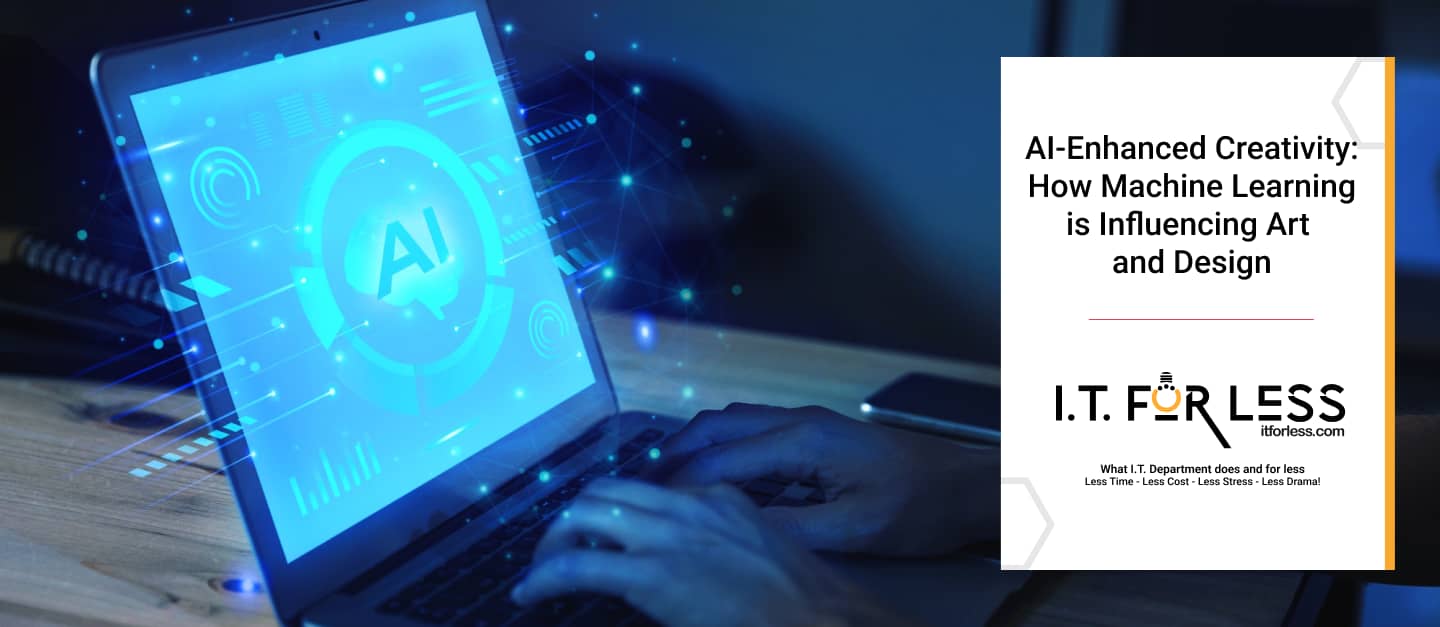Artificial Intelligence (AI) is more than just algorithms and data; it’s a creative force reshaping the artistic landscape. In this exploration, we delve into the captivating fusion of AI and creativity, examining how machine learning is not just influencing but enhancing the fields of art and design.
Generative Art: AI’s Brushstroke of Uniqueness
AI Algorithms Redefining Creativity: Generative art, the offspring of algorithms and creativity, has found a new muse in machine learning. Thanks to algorithms like Generative Adversarial Networks (GANs) and recurrent neural networks (RNNs), AI is now generating breathtaking, never-before-seen artworks.
Dynamic Dance of GANs: GANs, in particular, are a dynamic duo of neural networks, working together to birth remarkable art pieces. The generator conjures images, while the discriminator evaluates them, resulting in a unique dance that births realistic and often surreal artwork. The collaboration between machine and human creativity showcases the limitless potential when these two worlds collide.
The rise of AI in generative art has sparked a revolution in creativity, challenging traditional notions of artistic expression. Artists like Mario Klingemann and Robbie Barrat have harnessed the power of machine learning to produce mesmerizing pieces that blur the lines between the digital and the human touch.
AI as the Designer’s Silent Partner
Efficiency through Integration: In the design realm, AI has donned the role of a silent partner, aiding designers in various stages of their creative journey. Design software integrated with AI capabilities analyzes user preferences, predicts design trends, and generates design suggestions.
Adobe’s Sensei: A Designer’s Sidekick: Adobe’s Sensei, an AI and machine learning platform, automates repetitive tasks, suggests color palettes, and even predicts potential design issues, freeing up designers to focus on the more creative aspects of their work. This collaborative dance between AI and designers is not just about efficiency—it’s about elevating the design process itself.
As design becomes increasingly intertwined with technology, AI is enhancing the creative workflow by streamlining tasks and offering valuable insights. Designers can now harness the power of AI to optimize their processes, allowing for more time and energy to be invested in the conceptualization and execution of innovative ideas.
Harmonizing Tunes with AI and Penning Stories Beyond Imagination
AI’s Creative Influence in Music Composition
Pattern Analysis and Musical Mastery: AI’s creative influence extends beyond the visual arts into the realms of music composition. Algorithms analyze patterns in existing music, generating pieces that echo the style of renowned composers. The result is a harmonious blend of computational precision and artistic expression.
OpenAI’s GPT-3 in Creative Writing: Projects like OpenAI’s GPT-3 showcase AI’s prowess in creating coherent and contextually relevant text, assisting writers in content creation and even completing sentences. However, the ethical implications of AI-generated content and its impact on the authenticity of artistic expression spark ongoing debates within the creative community.
In the realm of music, AI is not just a tool but a collaborator, offering composers new avenues for exploration. The ability of AI to analyze musical patterns and generate compositions in various styles opens up possibilities for novel and innovative musical expressions. Similarly, in the realm of creative writing, AI’s capacity to understand context and generate human-like text provides a valuable resource for writers seeking inspiration and efficiency.
Tailoring Experiences: The Personal Touch of AI in Design
User Experience Elevated by Personalization: In the world of user experience (UX) design, machine learning takes center stage by personalizing interfaces based on user behavior and preferences. AI algorithms analyze user interactions, adapting designs to enhance the overall user experience.
Beyond Recommendations: Companies like Netflix and Spotify leverage machine learning to recommend personalized content, extending this approach to other digital platforms. As AI continues to refine its understanding of user behavior, personalized design experiences are set to become more sophisticated, blurring the lines between man-made and machine-crafted.
The integration of AI in user experience design is a testament to its ability to enhance the interaction between humans and technology. By tailoring interfaces to individual preferences, AI ensures that users have a more engaging and enjoyable experience, fostering a deeper connection with the digital products and services they interact with.
Navigating Challenges and Ethical Considerations
Balancing Creativity and Ethical Concerns
Addressing Bias in Algorithms: As we revel in AI’s creative enchantment, it’s essential to navigate the challenges and ethical considerations that come with this collaboration. Bias in algorithms poses a significant concern, requiring careful scrutiny and corrective measures to ensure fairness and inclusivity.
Preserving Human Authenticity: The potential loss of human creativity and the ethical implications of AI-generated content demand a delicate balance. Balancing the augmentation of creativity with the preservation of human expression authenticity is paramount in navigating this evolving landscape.
AI, while a powerful ally in the creative process, is not without its ethical challenges. The issue of bias in algorithms is a critical concern, as AI systems may inadvertently perpetuate existing prejudices present in the training data. Striking a balance between the benefits of AI-enhanced creativity and ethical considerations is essential to ensure that these technological advancements contribute positively to the creative landscape.
Conclusion: The Harmonious Symphony of AI and Creativity
The future of art and design is undeniably intertwined with the transformative capabilities of AI. From generative art to collaborative design tools, and from AI-infused music to personalized user experiences, the creative horizon knows no bounds. As we continue to explore the possibilities offered by AI, let’s approach these innovations with a human touch, ensuring that the collaboration between human creativity and artificial intelligence is a harmonious and empowering one. In this symphony, the conductor is both human and machine, creating a melody that resonates with the limitless potential of the creative spirit. The journey into AI-enhanced creativity is an evolving narrative, and as we navigate this intersection, let’s embrace the challenges and celebrate the harmonious blend of human ingenuity and technological innovation.
